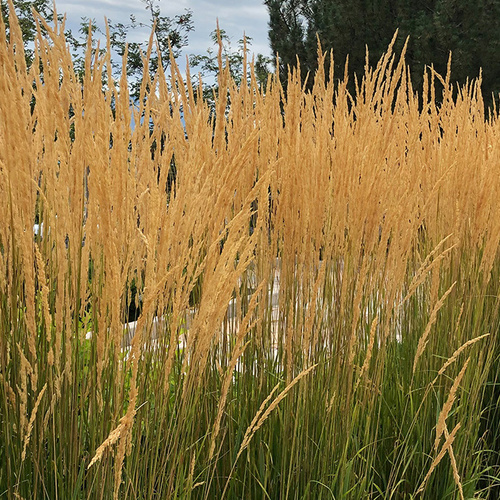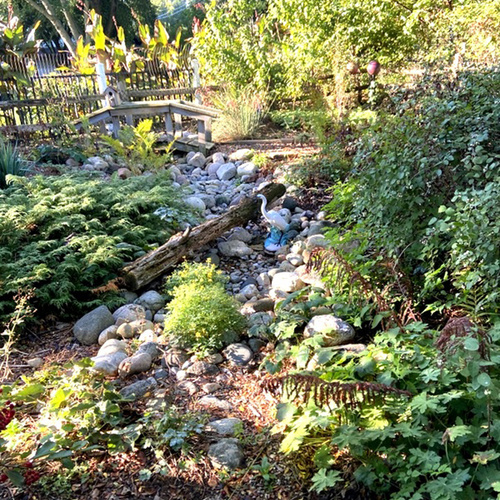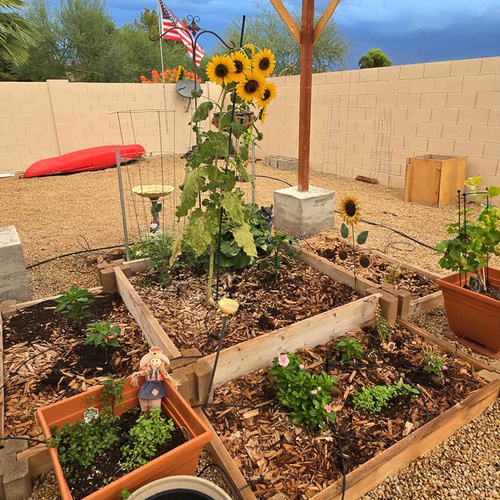With dramatic size, stunning silver-white plumes, and dense tussocks of blue-green foliage, it’s no surprise pampas grass (Cortaderia selloana) gained rock star status in the garden. After years of cultivation, however, the plant has escaped cultivation and invaded natural areas in Arizona, California, and Texas as well as many states outside the Southwest region. Gardeners looking to create the spectacle pampas grass delivers to the garden without risking harm to natural habitats can turn to equally dramatic native grasses, as well as a few well-behaved nonnative varieties. The following are organized based on the prominent ornamental traits they share with pampas grass.
Tall Ornamental Grasses for Big Impact
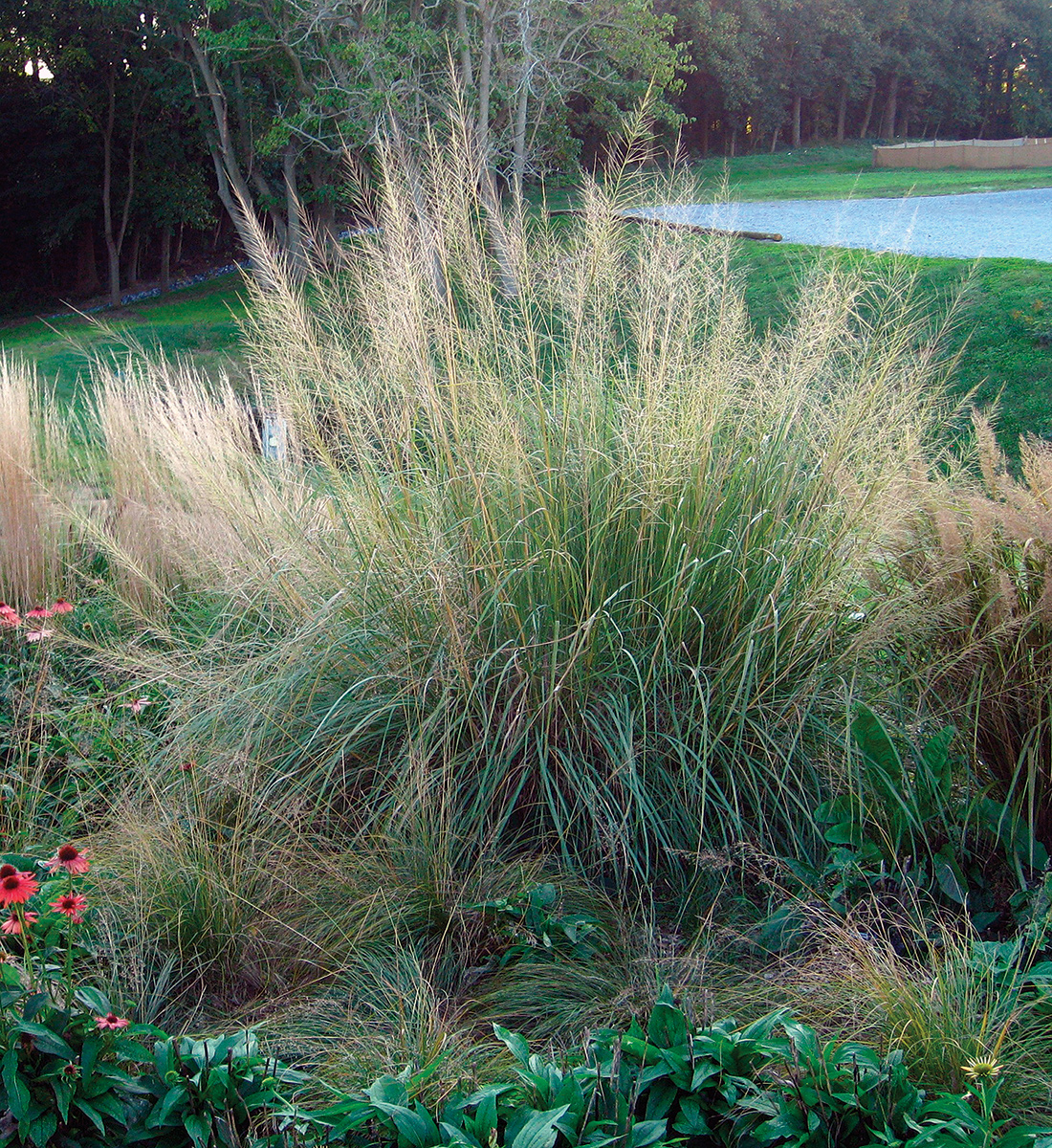
‘Windbreaker’ giant sacaton grass
Sporobolus wrightii ‘Windbreaker’
Zones: 5–9
Size: 8 to 10 feet tall and up to 6 feet wide
Conditions: Full sun; drought tolerant but can handle poorly drained soil
The soaring height of pampas grass, especially when in bloom, plays a big role in the plant’s performance. Standing up to 10 feet tall, the feathery plumes demanded attention. For an equally bold specimen, consider planting ‘Windbreaker’ giant sacaton grass, our largest native grass. ‘Windbreaker’ grass grows 8 to 10 feet tall and spreads 6 feet wide, with blond to bronze-colored flower spikes emerging midsummer and covering blades in an airy mass. As the cultivar name suggests, this grass also makes a fine windbreak when planted in masses. Hailing from southwestern grasslands, Windbreaker grass is very drought tolerant but looks best with a few deep waterings during the driest months. Plants adapt to any soil in full sun.
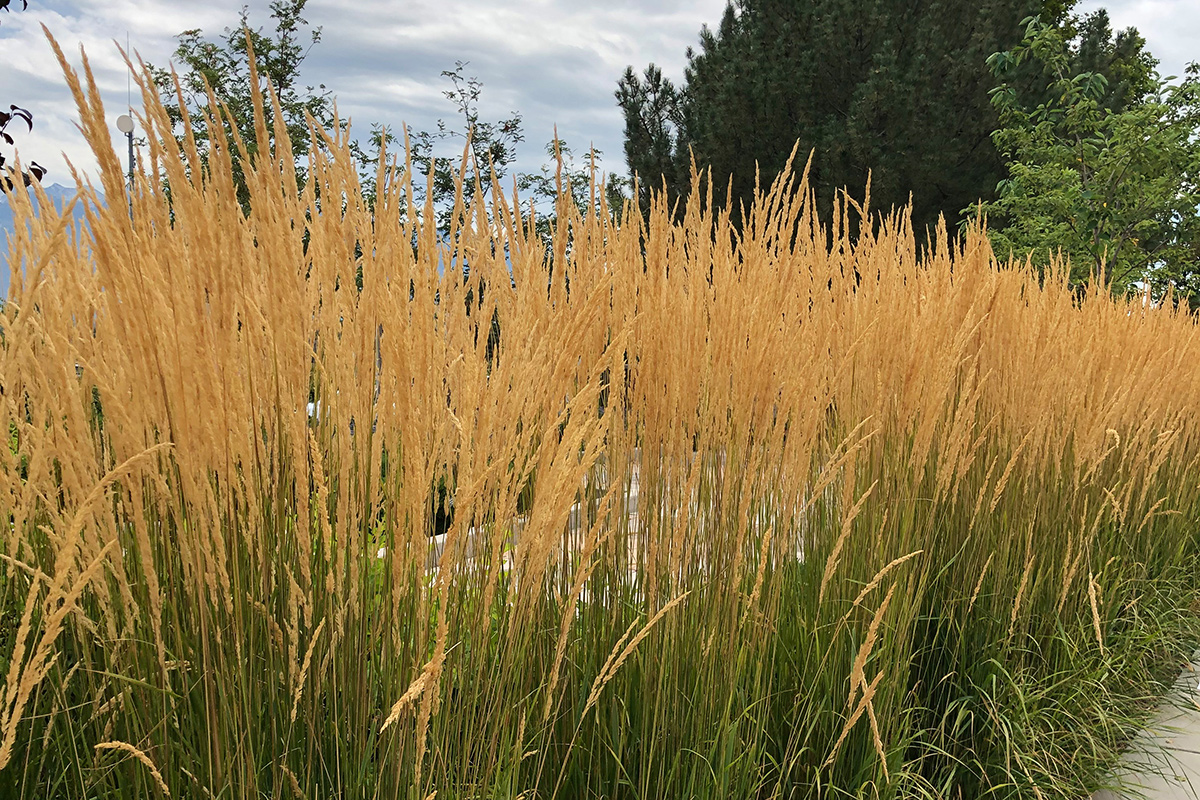
Indian grass
Sorghastrum nutans
Zones: 4–9
Size: 3 to 5 feet tall and 1 to 2 feet wide
Conditions: Full sun to part shade; average, dry to medium well-drained soil, can handle clay
In smaller gardens, Indian grass provides a dramatic vertical accent. Popular cultivars include ‘Sioux Blue’ and ‘Thin Man’, which produce gorgeous metallic blue foliage and showy, late summer flower heads that stand upright above the foliage, reaching 6-foot heights. Plant these grasses in lean, dry soil with good drainage. Indian grass thrives in full sun but also tolerates partial shade.
Grasses with Dramatic Plumes and Seed Heads
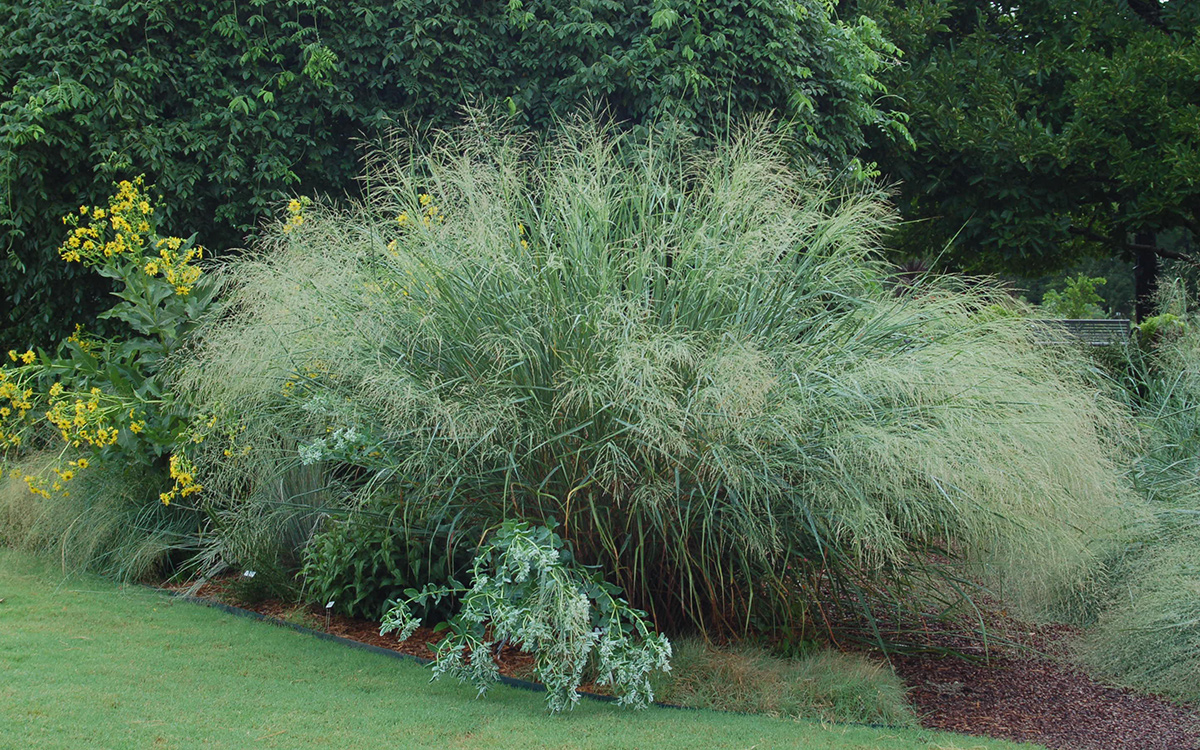
‘Cloud Nine’ switchgrass
Panicum virgatum ‘Cloud Nine’
Zones: 5–9
Size: 5 to 7 feet tall and 2 to 3 feet wide
Conditions: Full sun to part shade; average, dry to moist well-draining soil
The showiest features of pampas grass are the white, feather-like plumes that stand above the foliage. Few grasses produce similar-shaped flower heads on such large plants (though miniature versions abound in the equally invasive fountain grasses). But that’s not to say there aren’t safe and showy specimens to choose from, such as the aptly named ‘Cloud Nine’ switchgrass (Panicum virgatum, Zones 5–9). Towering 5 to 7 feet tall, the blue-green foliage of this adaptable native grass is enveloped in airy plumes for a cloudlike effect. Cream-colored flower heads emerge in August and shift to golden hues along with the foliage in autumn. Plants adapt to a wide range of soils from dry to moist, lean to average, but require good drainage. Plant in masses in full sun to partial shade for a dramatic display.
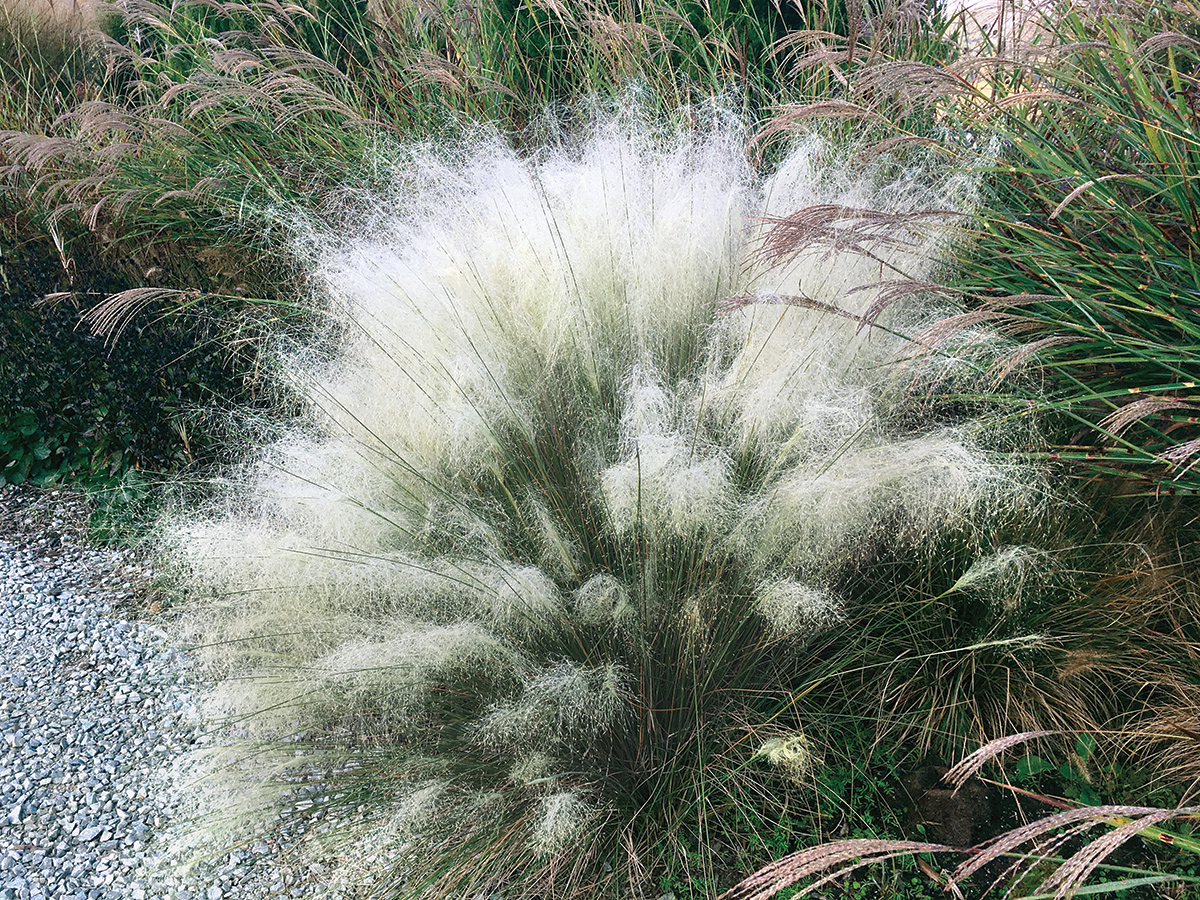
‘White Cloud’ muhly grass
Muhlenbergia capillaris ‘White Cloud’
Zones: 6–10
Size: 3 to 4 feet tall and 2 to 3 feet wide
Conditions: Full sun to light shade; sandy or rocky, dry to medium well-drained soil
‘White Cloud’ muhly grass produces a similar airy inflorescence, though the autumn plumes stand above the foliage and reach 12 inches in length. The overall size of this selection is smaller, producing clumps of narrow blue-green foliage that mature to 3 feet tall and wide (4 feet tall in bloom). Plants thrive in dry to medium, well-drained soil in full sun to light shade.
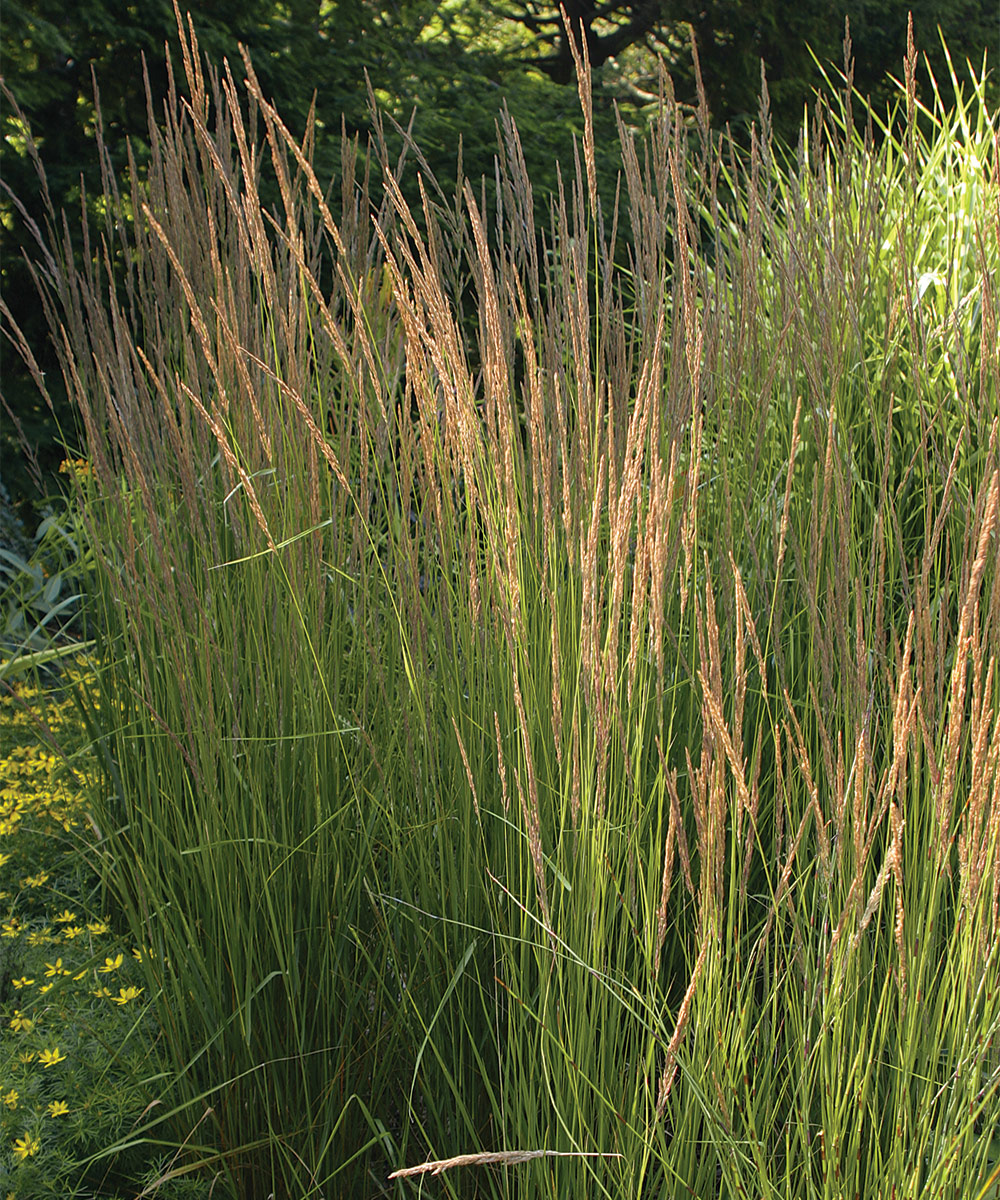
Feather reed grass
Calamagrostis × acutiflora
Zones: 5–9
Size: 3 to 5 feet tall and 2 to 3 feet wide
Conditions: Full sun to part shade; average, medium to wet soil
If the upright habitat of pampas grass plumes with the distinct separation between flowers and foliage appeals to you, you might appreciate the stately architecture of feather reed grass. A natural hybrid of one European and one Asian species (C. arundinacea and C. epigejos, respectively), this clump-forming grass rarely sets fertile seed, avoiding problems common to other nonnatives. Notable varieties include ‘Karl Foerster’, ‘Eldorado’, and ‘Hello Spring’, which mature to 4½ to 5½ feet tall and 3 feet wide. Elongated flower heads rise above the foliage in early summer, emerging in pink to purple hues, and stand tall all summer, taking on golden hues as the plumes mature. Plants are better suited to moist areas of the Southwest and benefit from afternoon shade in hot climes.
Grasses with Tussocks of Blue-Green Foliage
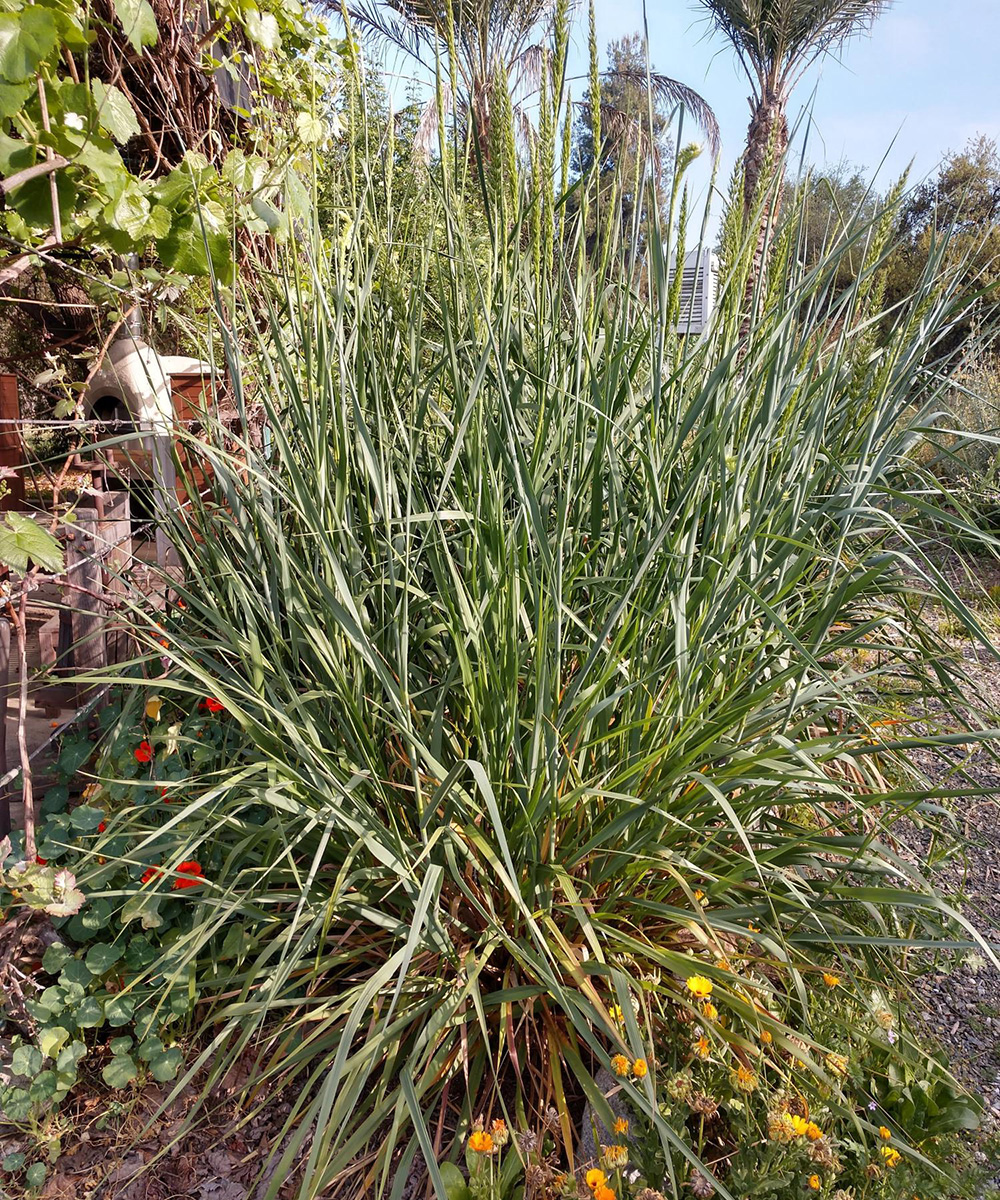
Giant wildrye
Elymus condensatus
Zones: 7–10
Size: 3 to 8 feet tall and 3- to 4-foot-wide clumps
Conditions: Full sun; dry, well-draining soil
While the dazzling plumes certainly steal the show, the habit of pampas grass appeals to many gardeners. Pampas grass grows in dense tussocks or mounds of slender, blue-green foliage. The California Department of Fish and Wildlife recommends the evergreen giant wildrye as an alternative to pampas grass. This California native delivers many of the same aesthetic qualities as pampas, while also providing seeds for songbirds. Plants grow in 3- to 4-foot mounds and produce elongated, wheat-like inflorescences. Plant in any dry, well-draining soil in full sun. Giant wildrye is drought tolerant once established.
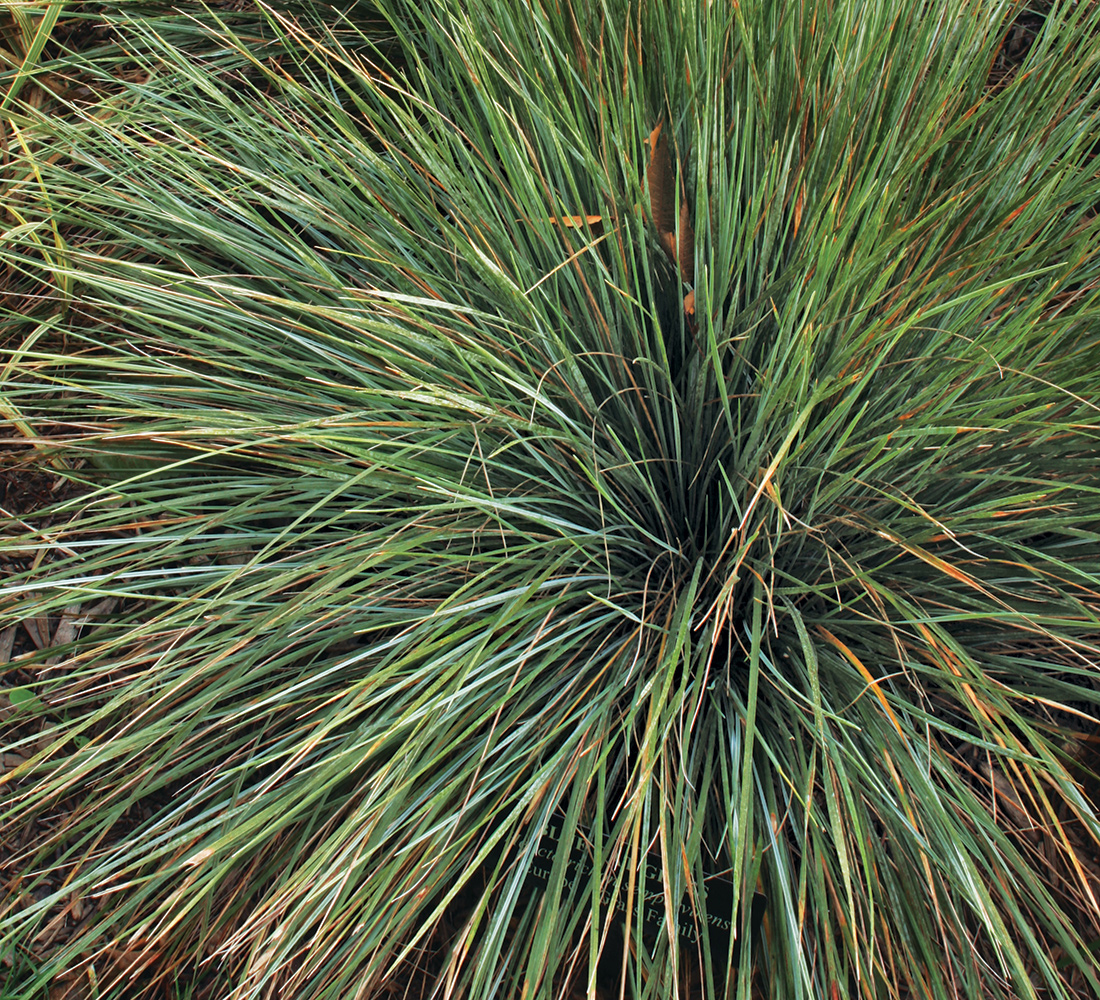
Blue oat grass
Helictotrichon sempervirens
Zones: 4–8
Size: 2 to 3 feet tall and wide
Conditions: Full sun; average, dry to medium well-drained soil
Blue oat grass is another blue-green grass with a similar but smaller form compared to pampas grass. Graceful silvery-blue foliage grows in tidy mounds maturing just 2 to 3 feet tall and wide. Arching golden panicles rise above the foliage in midsummer. Blue oat grass thrives in dry to medium well-drained soil in full sun, with the best blue color occurring under drier conditions. Foliage remains evergreen in warm winter climates.
More ornamental grass information and inspiration:
Discuss this article or ask gardening questions with a regional gardening expert on the Gardening Answers forum.
And for more Southwest regional reports, click here.
Kim Toscano is a horticulturalist, entomologist, garden designer, writer, and graphic designer. She previously hosted Oklahoma Gardening, a weekly PBS television program produced by the Oklahoma Cooperative Extension Service.
Fine Gardening Recommended Products
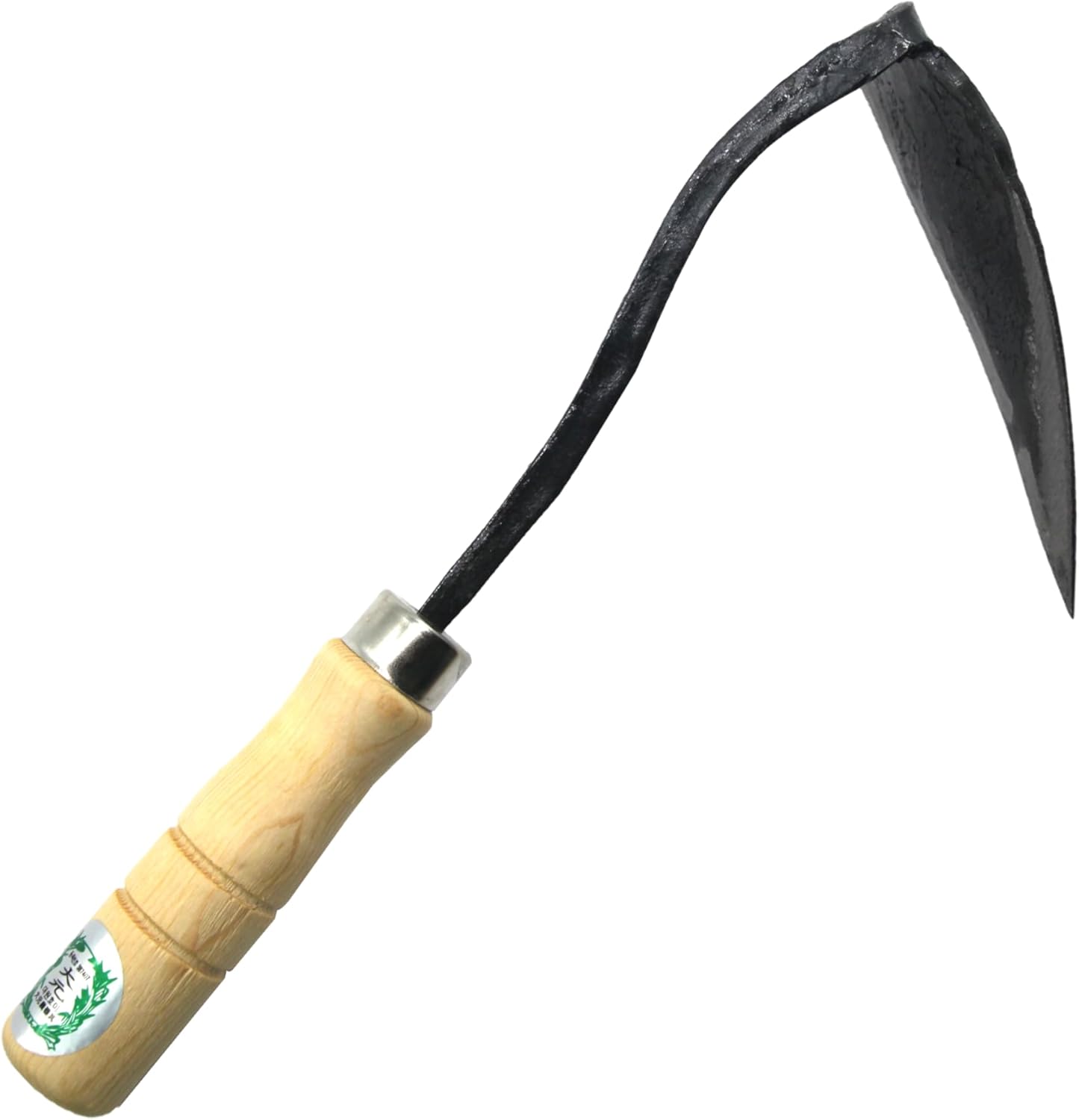
Ho-Mi Digger – Korean Triangle Blade
Fine Gardening receives a commission for items purchased through links on this site, including Amazon Associates and other affiliate advertising programs.
Versatile Tool: The Easy Digger Korean Triangle Blade Ho Mi Ho-mi is a versatile gardening tool designed for leveling and digging in home and garden settings. Efficient Design: Its unique triangular blade shape allows for easy soil penetration and efficient leveling of garden beds or landscaping areas. Durable Construction: Crafted with sturdy materials, this tool ensures long-lasting performance and reliability.
Ergonomic Handle: The comfortable handle provides a secure grip, reducing hand fatigue during extended use. Compact Size: Its compact design makes it easy to maneuver in tight spaces and store when not in use.

The Crevice Garden: How to make the perfect home for plants from rocky places
Fine Gardening receives a commission for items purchased through links on this site, including Amazon Associates and other affiliate advertising programs.
A crevice garden replicates the environmental conditions of mountain tops, deserts, coastlines, and other exposed or rocky places on earth. These striking garden features provide perfect conditions for the plants native to these far-off places, bringing the cultivation of these precious gems within everybody’s reach.
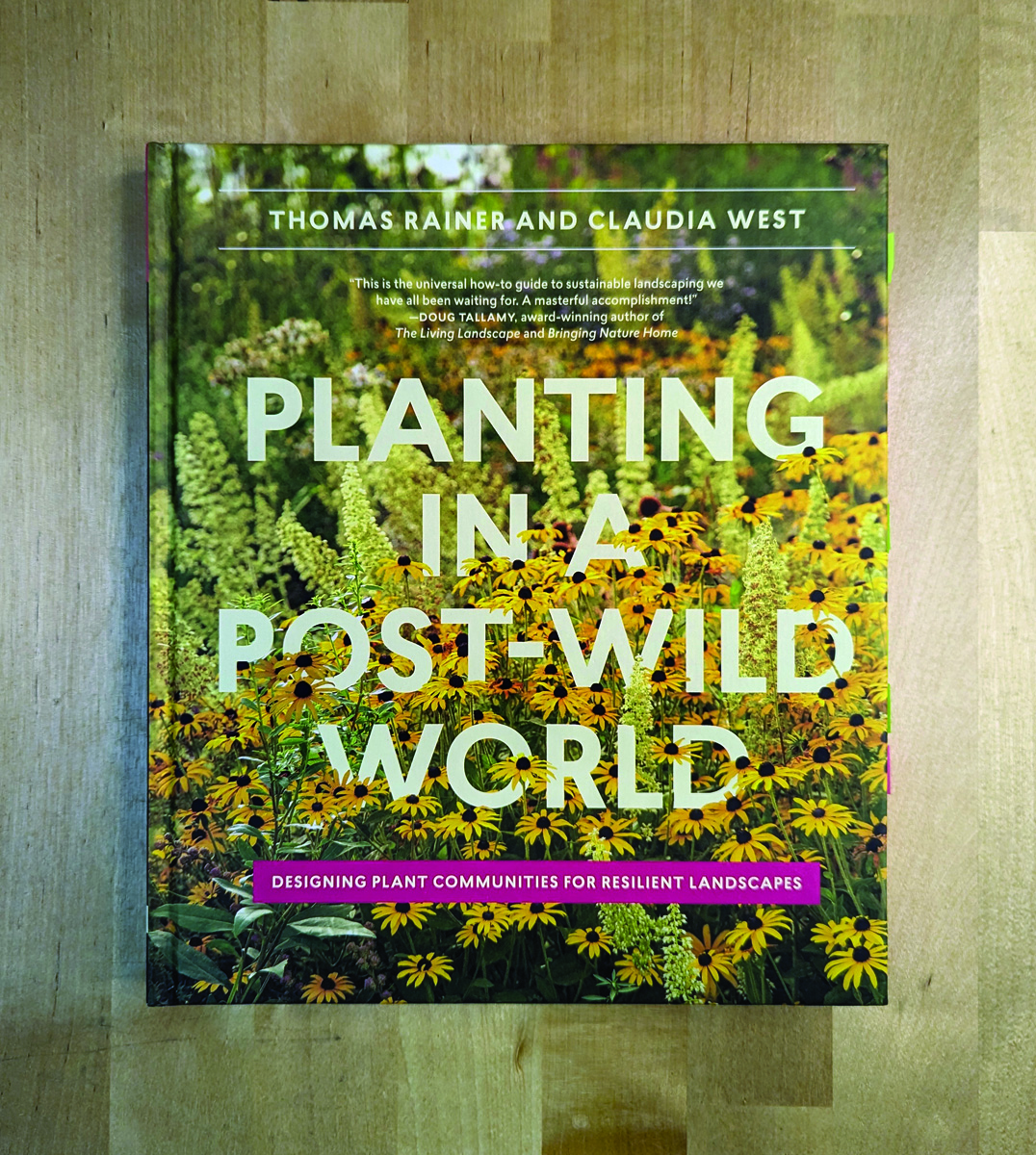
Planting in a Post-Wild World: Designing Plant Communities for Resilient Landscapes
Fine Gardening receives a commission for items purchased through links on this site, including Amazon Associates and other affiliate advertising programs.
Featuring gorgeous photography and advice for landscapers, Planting in a Post-Wild World by Thomas Rainer and Claudia West is dedicated to the idea of a new nature—a hybrid of both the wild and the cultivated—that can nourish in our cities and suburbs.




